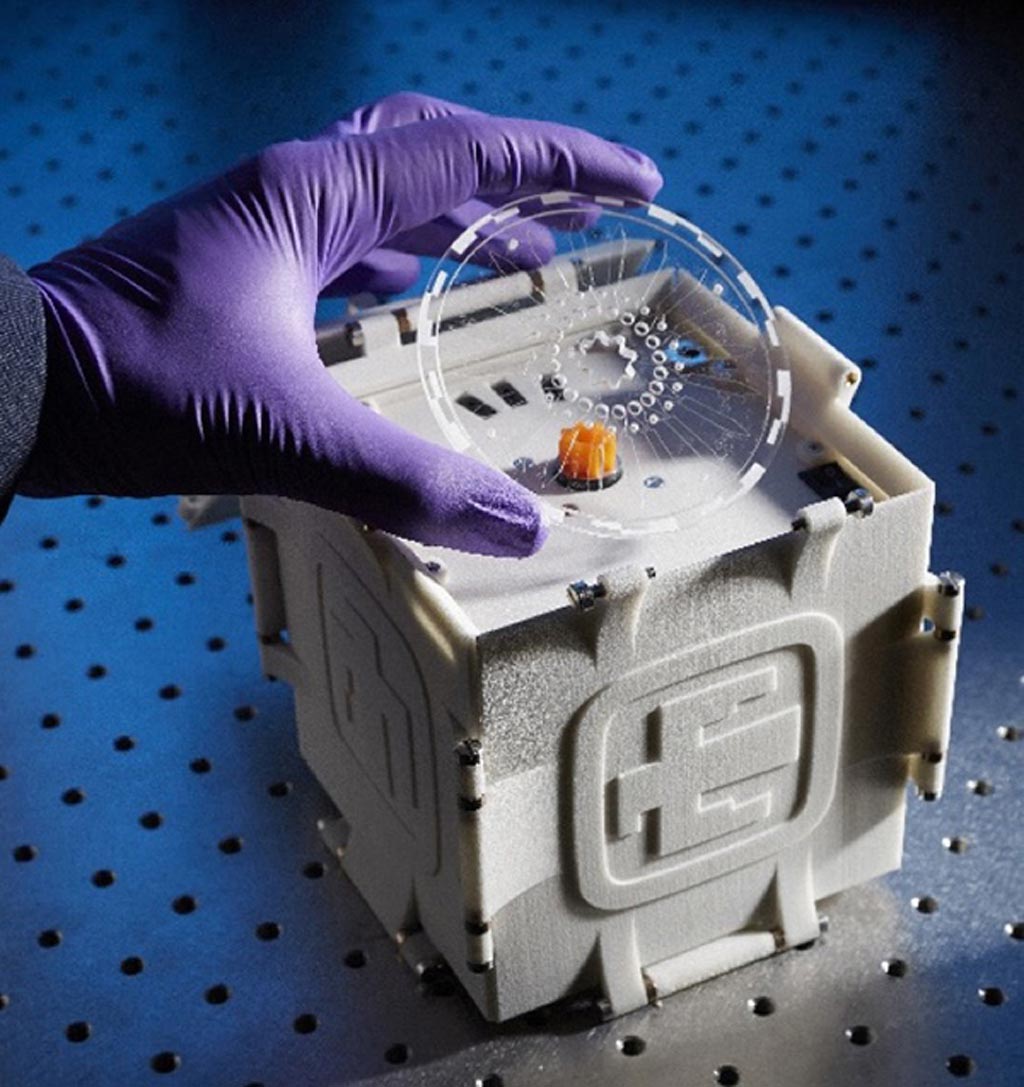Integrated LAMP and Immunoassay Platform Detect Diarrheal Disease
By LabMedica International staff writers
Posted on 26 Sep 2018
The challenges of diagnosing infectious disease, especially in the developing world, and the shortcomings of available instrumentation have exposed the need for portable, easy-to-use diagnostic tools capable of detecting the wide range of causative microbes while operating in low resource settings.Posted on 26 Sep 2018
There are approximately 1.7 billion cases of diarrheal disease globally each year, and the syndrome is frequently caused by infections. Children are particularly vulnerable; diarrheal disease kills more than half a million children worldwide each year, and is the second leading cause of death in children under the age of five. It also represents a significant unmet diagnostic need, particularly in the developing world.

Image: The SpinDx system (Photo courtesy of Sandia National Laboratories).
Biotechnologists at the Sandia National Laboratories (Livermore, CA, USA) have developed a syndromic test that combines immunoassays and isothermal amplification-based molecular testing. Essentially a small, fully integrated syndromic panel, the test can go from stool sample to result using the next generation of a platform developed at Sandia called SpinDx. The SpinDx system, a centrifugal microfluidics diagnostics platform with integrated sample preparation. Among other enhancements, the newest version now incorporates non-contact temperature control using a medium-wave infrared heater.
The assay can detect three protein-based enterotoxins as well as DNA of three enteric pathogens. Specifically, it detects cholera toxin, Staphylococcal enterotoxin B, and Shiga-like toxin 1, as well as Campylobacter jejuni, Escherichia coli, and Salmonella typhimurium, in less than one hour. A panel of LAMP reactions was developed for the detection of C. jejuni E. coli, and S. typhimurium. In order to determine the limit of detection of the immunoassays, toxin solutions were diluted to concentrations of 1,000, 300, 100, 30, 10, 3 and 0 ng/mL and each was run in triplicate – with the exception of the highest concentration, which was run in duplicate.
The authors concluded that the core feature of the platform enabled multiplexed detections without the burdensome complexity found in similar centrifugal microfluidic devices is the non-contact heating system. The advantages of this system, in which the heat source is spatially separate from the disc, are numerous, including the viability of a simple, low-cost disc, since features such as embedded heating elements or actuation systems for bringing a heater into contact with the disc are not needed. The study was published originally published online on August 10, 2018, in the journal Biosensors and Bioelectronics.
Related Links:
Sandia National Laboratories














